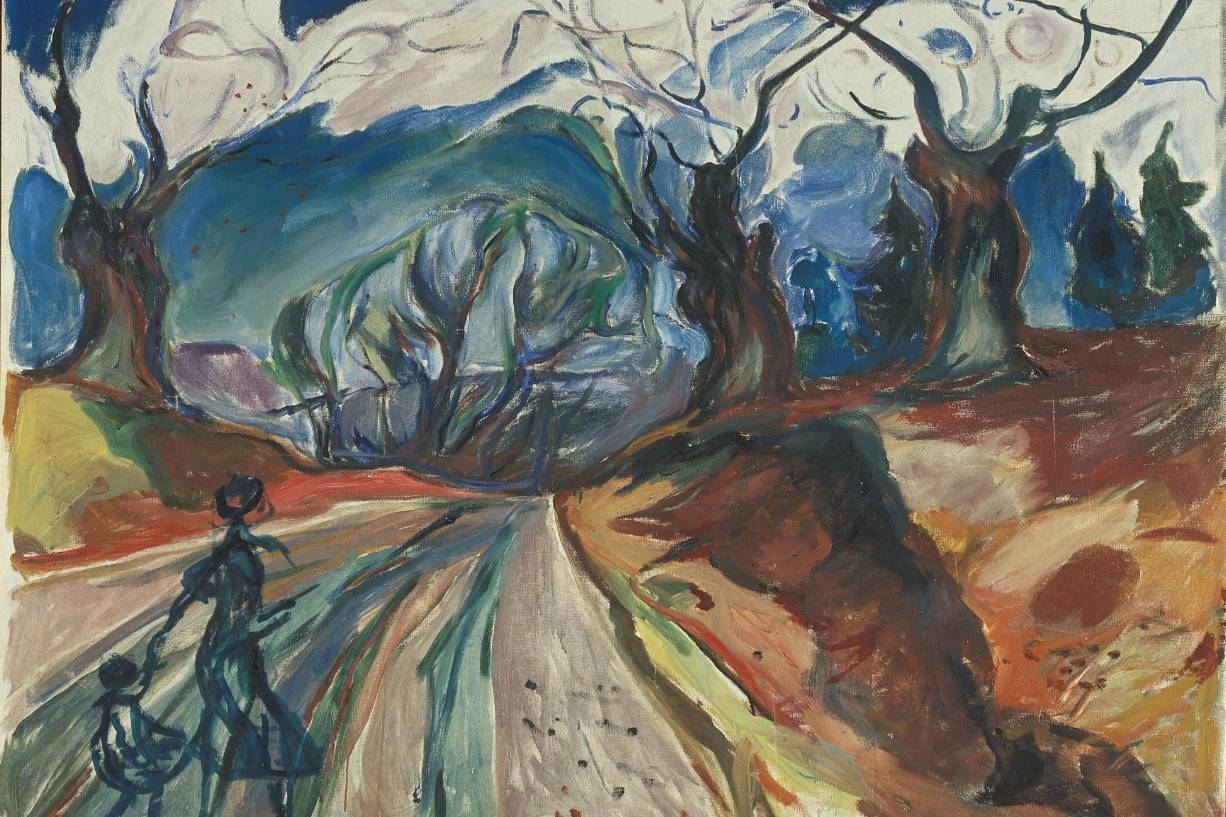Edvard Munch thought of nature as ‘the eternal great realm from which art derives its sustenance.’ In this exhibition, the many and various ways in which he depicted nature are explored via eight themed rooms: ’In the Forest’, ‘Cultivated Landscape’, ‘On the Shore’, ‘Chosen Places’, ‘The Scream of Nature’, ‘Storm and Snow’, ‘In a Cosmic Cycle’ and ‘Beneath the Sun’. In the final room, the exhibition culminates by reuniting 11 early versions of the visionary paintings he created for the University of Oslo’s Aula (ceremonial hall).
With our current understanding of humanity’s relationship with nature, Munch’s vision appears more relevant than ever. In his universe, humans are not separate from nature, but instead inhabit the Earth with an equal status to everything else. At the same time, the moods and livelihoods of people in his images are inseparable from the environment which surrounds them.
Over time, Munch developed a personal worldview in which science, human biology, Earth and cosmos were all holistically linked. The paintings, prints and drawings in this exhibition give us a whole new way of understanding Munch: an artist fascinated by humankind’s interaction with the Earth and its natural cycles. Indeed, it could be said that his way of seeing the world was entirely rooted in nature.
Deathprod (Helge Sten) and Lost Girls (Jenny Hval and Håvard Volden) have each created a sound work for two of the exhibition spaces. In collaboration with MUNCH, the Smalltown Supersound label will also release a double LP, Jordsvingninger (Trembling Earth), on which 18 musicians have made new tracks inspired by works in the exhibition.
The exhibition includes generous loans of major works and rarely seen paintings from many international and Norwegian collections including: Ateneum Art Museum in Helsinki, Canica Art Collection, Dallas Museum of Art, Kunsthalle Mannheim, The Museum of Modern Art in New York, The National Museum in Oslo, Musée d’Orsay in Paris, Hasso Plattner Collection, Christen Sveaas’ Art Collection, Von der Heydt-Museum Wuppertal, and several private collections.




